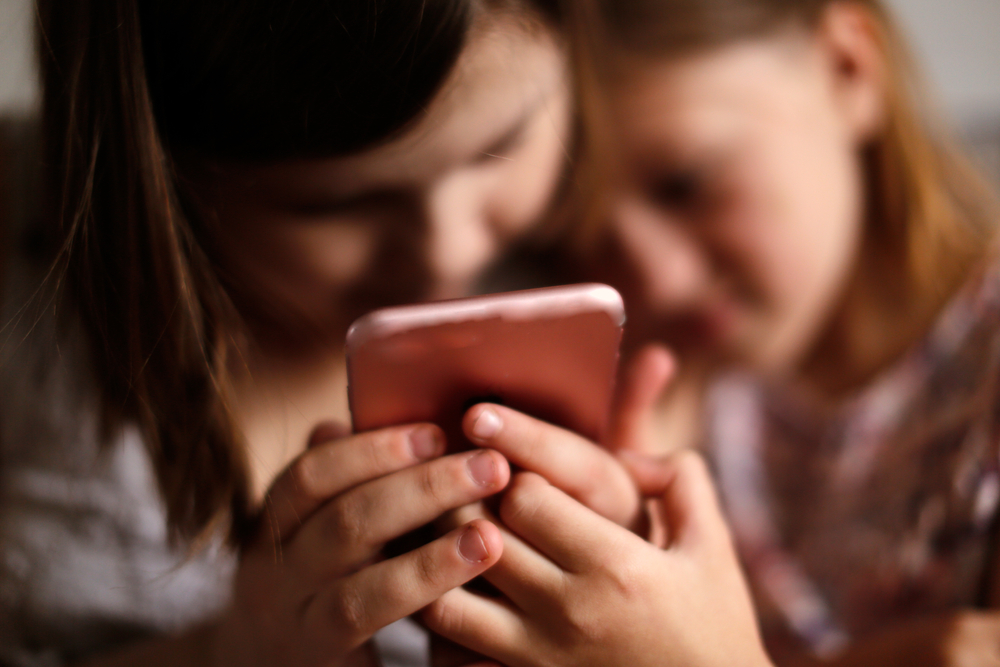There was a time when multi-layered camisoles, bright blue eyeshadow, and hastily scribbled date requests with a yes or no check box were the epitome of those awkward teenage years. But no more. Gone are the days of tightly clenched lips over glistening metallic smiles and slightly off-color foundation slightly dabbed onto pimples scattered across your chin. That’s all been replaced with perfectly contoured cheek bones and first day of school outfits rivaling Anne Hathaway as she strutted down the street to Madonna’s “Vogue.”
Could this be because teens have become less awkward? Questionable. Could this actually be the result of social media becoming the focal point of many teenagers’ day? Most likely. Although scrolling through videos of dogs getting their zoomies out or adorable compilations of babies laughing at their own reflection is nothing I haven’t done myself, there’s something concerning about the other aspect of social media and how the number of likes and comments on a selfie can make or break someone’s day.
Studies have shown that almost daily use of social media can actually double your risk of anxiety and depression, which may explain the changes we’ve seen in how children present themselves and the mental health crisis we currently find ourselves in. Although changes in your child’s appearance may not be cause for concern, the reasoning behind it might be. With 95% of 13- to 17-year-olds and 40% of 8- to12-year-olds having at least one or more social media account, this may explain why the U.S. Surgeon General has proposed these apps come with warning labels, much like a bottle of prescription medication.
However, pediatric providers and parents shouldn’t rely on policy changes when it comes to monitoring what children are seeing and posting on their accounts. Well child visits typically include screenings to determine whether your child is experimenting with drugs or alcohol, but how often are they handed a questionnaire about their social media use or screen time? How much detail does a provider go into when discussing a mental health concern or the role of social media?
Whether we would like to admit this or not, we know that endlessly scrolling on your phone for hours isn’t the healthiest pastime, even though it can be a fun distraction. So what can we do to change the narrative that says social media is here to stay so what’s the point? The first step is identifying those children who are most at risk for overuse of social media apps. The American Academy of Pediatrics has no current individual screening recommendations, but they do recommend the Family Media Use Plan, which offers families a customizable plan to effectively monitor and limit social media use in the household based on individualized goals and core values. As we all know, healthcare isn’t one-size-fits-all, so this can be a great option for both providers and parents when a clear choice on how to proceed doesn’t exist.
Next, parents need to act as strong advocates for their children. If you feel that you’ve tried everything you can at home to curb the urge to post or scroll, bring it up with your provider. If you feel that the mental well-being of your family is in jeopardy because of social media, call your provider. Mental health affects everything—weight, school performance, relationships, and even the integrity of your skin. So, if social media can have a negative impact on mental health, it will additionally have an effect on these other aspects necessary for a balanced and healthy lifestyle.
Rather than wait for changes that may never come, providers and parents can start advocating now. Changes don’t have to be drastic to have an impact. Consider starting with putting phones away at dinnertime. Ask your pediatrician discuss the importance of mental health with your child. Make social media a reward rather than a must-have. If we as providers and parents start working together to institute these changes, perhaps a black box warning won’t even be necessary in the future.
Victoria McMullen, CPNP, PMHS, MSN is an assistant professor at Russell Sage College in Troy, NY.


















